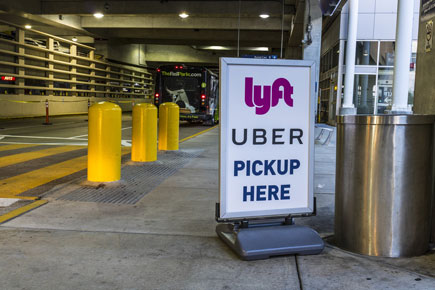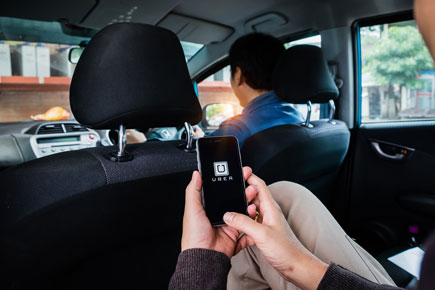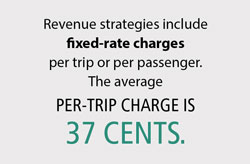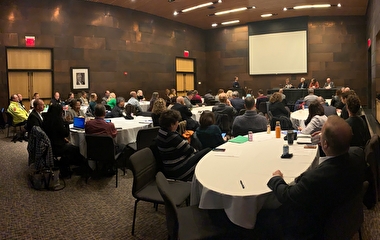Shared mobility is transforming transportation in major urban cities. Ride-hailing services such as Uber and Lyft are popular and growing rapidly, but they also create challenges for policymakers and planners, especially in transportation decision making.
In response to these new challenges, state and local governments are regulating ride hailing and imposing a variety of taxes and fees on service providers and users. In a new study, U of M researchers analyzed these taxes and fees in cities across the US.
“We particularly focused on those revenue strategies levied on ride-hailing usage, which generally are on a per-trip basis, as these have a direct impact on users,” says Jerry Zhao, professor in the Humphrey School of Public Affairs and the study’s principal investigator. The study was funded by the U’s Transportation Policy and Economic Competitiveness Program.
Previous research has looked at the transportation impacts of ride-hailing services, with inconclusive results. For example, some studies say these services complement public transit, while others find they reduce transit ridership and revenues. Other studies see fewer trips by private vehicles and taxicabs and less congestion, but others observe non-driving trips (such as biking and walking) switching to ride hailing.
“The consensus, though, is that ride-hailing services are more likely to contribute to more miles traveled in vehicles,” Zhao says.
Changes in transportation in turn have implications for state and local public budgets, but there is limited information to date. To help meet this need, Zhao’s team analyzed three main aspects of ride-hailing revenue strategies. First was the usage of the revenues. “The majority of localities use them as a mechanism to cover regulatory costs or fill budget gaps,” he says. “Very few use the proceeds to improve transportation systems and mobility overall.”
Second, the team analyzed the different pricing systems used by localities. Most adopted a fixed fee or surcharge paid per trip; only two localities established differential fees depending on the type of ride. “Setting tiered rates—perhaps charging more for long-distance trips and peak travel times—could help planners increase vehicle occupancy and reduce traffic congestion,” he says.
Last, the researchers examined the rationales for imposing a revenue-raising strategy, the perceptions of key stakeholders, and media discussions. According to the study, a common reason to tax ride-hailing companies is to help offset losses from other modes, such as the decline of transit ridership.
Most debates around the adoption of the revenue-raising strategies involved the legislative and executive branches of governments at different levels, ride-hailing companies, taxi businesses, users, and others. Supporters argued that the measures would contribute to customer safety and more equitable transportation options for all residents, while opponents stated concerns about the disproportionate impact on the middle class and low-income populations.
“Our findings provide a framework of current practices to help state and local governments make informed decisions regarding taxes and regulations,” Zhao says. He adds that there is no statewide regulation in Minnesota.
Others on the research team were Humphrey School research associates Camila Fonseca and Raihana Zeerak.





